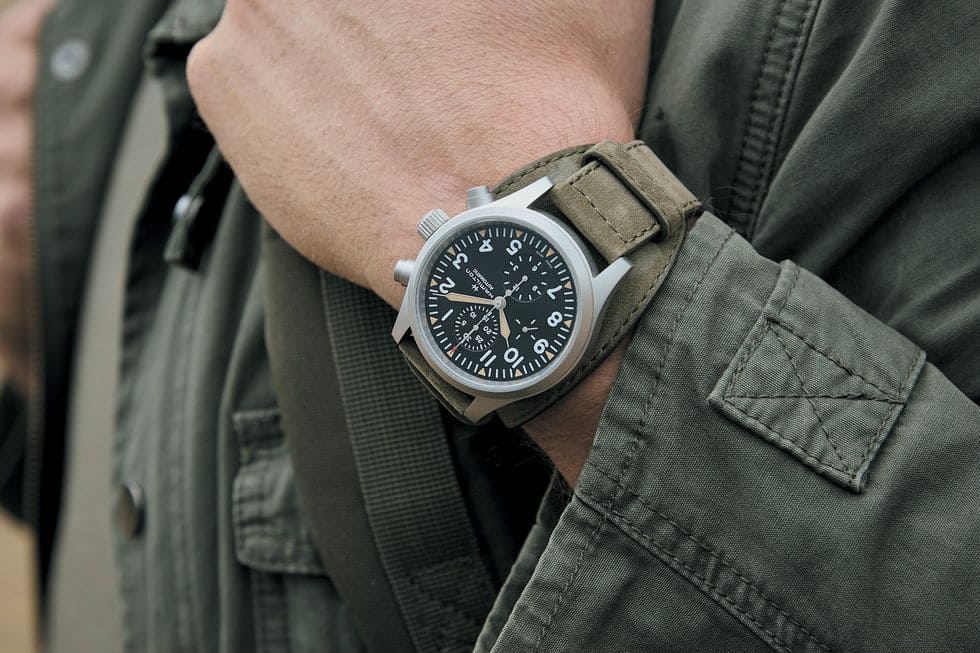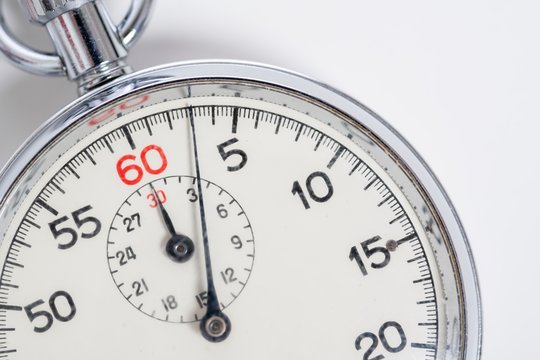Some of the most accurate wireless monitoring gadgets on the market today are fitness bands made by companies like Fitbit and, more recently, smartwatches. But regardless of how often you wear your fitness tracker, it won't be of any use to you if it fails to count your steps accurately or provide an accurate reading of your heart rate.
In your pursuit of ultimate fitness and all the monitoring that goes along with it, here are some helpful hints to guide you along the way.
- What should I do if the number of my steps doesn't appear to be correct?
- Oh, no! I've done it again—I've forgotten to bring my Fitbit!
- What gives me access to other levels sometimes?
- How can I increase the accuracy of the information I get from my heart rate monitor?
- What happens if the data does not appear in the mobile app on the smartphone?
- What can I do to prevent the battery from running down completely?
- How can I connect my Apple Health data with my Fitbit?
- And last but not least, if nothing else works,
Additional Reading: What Smartwatches Are Compatible With Motorola Smartphones?
1. If the number of steps I've been counting appears to be inaccurate, what should I do?
Trackers made by Fitbit are equipped with an algorithm for counting steps that have been properly calibrated. This algorithm is meant to recognize patterns of intensity and motion that are most suggestive of people walking and running. However, you shouldn't kid yourself into thinking that it will ever reach a state of perfection.For instance, if you are working at a desk, reading a book, or engaging in other activities that involve moving your arms, the tracker may sometimes count some additional steps since it may believe that you are walking. This should not give rise to any concerns on your part. If, on the other hand, you get the impression that the issue is more widespread, there are a few things you may do to increase the accuracy.
Before anything else, check to see that the wrist positioning settings are accurate. Position your tracker so that it is roughly the width of a fingertip below your wrist bone.
The second thing that you can do is manually alter the stride length that Fitbit determines for you depending on your height and gender. However, you won't be able to accomplish this until you figure out what the problem truly is. The procedure is one that is not too complicated. Get to a location where you can get an accurate reading of the distance. While you walk over that distance, keep track of the number of steps you take, and make sure you cover at least 20. To determine the length of your stride, take the entire distance traveled and divide it by the number of steps you took. The same method may also be used to determine your running stride.
You have undoubtedly spent most of your time on the mobile app. Nevertheless, some of the most important variables, such as the length of your stride, are buried in the online interface settings. You may modify these settings by logging into your Fitbit account on fitbit.com and clicking on the gear icon located in the upper right corner of the screen. Select Settings, then edit the Stride Length and Running Stride Length columns to reflect your preferences. In the event that they are left empty, the values will be estimated by the system based on your height and gender. Select the Save option. The modifications will take effect after the subsequent synchronization of your tracker.
Did you know that the readings from your Fitbit will differ depending on which wrist you wear it on?
The dominant wrist option lessens the sensitivity of the step counting function, which should help prevent the watch from counting too many steps even when your body is not in motion. The non-dominant wrist setting, which is the one that is selected by default, has the opposite effect. It does not matter which setting you choose, as long as you communicate your decision to Fitbit. You may make these adjustments by using the Fitbit app on your smartphone or by using the Fitbit online interface on your computer.This information may also be utilized to hack into the system, but only if you're in the mood for something naughtier! You can trick the app into thinking you're doing more steps than you really are by wearing your smartphone on your dominant hand while specifying in the app that you wear it on your non-dominant hand.
Getting back to the settings, it's possible that you weren't expecting a child or breastfeeding when you originally put on your tracker, but now you are. If this is the case, you'll want to make a note of your new status in Fitbit as soon as possible. Women who are pregnant or breastfeeding both have a higher calorie expenditure and a higher calorie need.
Additional Reading: Which Is The Best Non Bluetooth Fitness Tracker
2. Oh no! I can't believe I've forgotten my Fitbit yet again!
We've all been in that situation. Because you were in such a hurry to get to work, you forgot to bring your reliable little gadget with you. To add insult to injury, remembering to put on your Fitbit might be difficult for some of new users, especially in the beginning.One possible response is to call in ill or arrive at work later than usual. After all, what is the sense of going for a stroll if your steps are not going to be recorded? There is an additional option available in the event that you have previously used that one; just turn on support for MobileTrack and Multi-Trackers.
The mobile track makes use of your phone to keep track of fundamental activity data such as the number of steps taken, the distance travelled, and the calories burned. It will not, however, keep track of floors, activity minutes, or sleep minutes. Follow the on-screen steps after navigating to the Account menu in the mobile app, selecting Set Up a Device, and then selecting MobileTrack from the available options.
You also have the option to make use of the Multi-Tracker function, which recognizes when you are moving about without your Fitbit tracker and automatically switches over to the secondary tracker. When you choose this option, more than one device will be added to your account. As a result, you will be able to see a single comprehensive overview of your daily activities on your dashboard, which will include data from more than one tracker.
The majority of Fitbit trackers have the capability to automatically recognize when you're engaging in physical activity. However, you always have the option of going back over these activities and manually labelling them afterwards. This will result in a more accurate session overall and will provide you with more information to go through.
In the event that you forget to put on your tracker, you may manually add an activity by using the Fitbit app or by going to the Fitbit website. Be aware that the step and calorie data associated with an activity that you manually record will take precedence over the data that is automatically identified by your tracker within the same time period. As long as the manually documented activity has the right start time and length, this guarantees that your steps are not tallied twice as often as they should be.
3. Why do I get more levels sometimes?
Climbing stairs is a kind of cardiovascular activity that helps burn calories and may be an essential component of a lifestyle that is both fit and healthy. It is also occasionally recommended as a kind of exercise for the purpose of weight loss. Stair climbing is a great way to strengthen our muscles and bones since it helps to build bone density and improve muscle tone. If your tracker is capable of measuring floors, it does so with the help of an altimeter, which is a sensor that determines height by calculating it based on the pressure in the surrounding air.Changes in pressure brought on by other factors are not impossible. This may be anything as simple as a burst of wind, as dramatic as a shift in the weather, or as simple as opening a door. Because of this, it is possible that it may lead your tracker to periodically report fictitious additional floors. This is an undesirable consequence. The height of the floor is still another consideration. When you have climbed around 10 feet, your tracks will report one floor as having been traversed. If you climb lengthy stairs, you may notice that the tracker's floor count does not match the number of floors that you have climbed since the staircase was higher than ten feet. This is because the tracker only counts floors that are at least ten feet tall.
We regret to inform you that the Fitbit app does not currently have the ability to erase floors or steps for that matter. Even if it's not ideal, there is a solution that can be used. It entails the addition of a driving action as a means of bypassing the additional levels or stairs. There are a variety of methods to achieve this, and you may learn about them on this page.
Further Reading: Best Smartwatch For OnePlus
4. How can I increase the accuracy of the numbers that I get from my heart rate monitor?
A significant selling element of most Fitbit devices is the heart rate, monitor. The accuracy of any heart-rate monitoring equipment, whether it be a chest strap or a sensor worn on the wrist, is impacted by factors such as the individual's physiology, the placement of the garment, and the kind of activity.If you want to wear your tracker comfortably all day, even when you're not working out, it should sit a finger's breadth below your wrist bone and lie flat, much as you would if you were wearing a watch. When worn on the top of the wrist, the Fitbit tracker is in the optimal position to provide the most accurate readings of a user's heart rate.
Experiment with moving the monitor up higher on your wrist so that it can provide more accurate readings of your heart rate when you work out. Moving the tracker up your arm a little bit will help enhance the heart rate signal since the blood flow in your arm improves as you go up your arm. This will also assist you with some workouts that require you to often bend your wrist, which is another movement that might interfere with the signal that your heart rate monitor receives.
Make sure that your tracker is not worn too snugly. Blood flow is restricted while wearing a tight band, which may have an effect on the heart rate signal. Having said that, the tracker should also be worn somewhat more snugly during physical activity as opposed to when it is worn continuously throughout the day.
In addition to that, set aside some time to become acquainted with the different heart rate zones. You may be wondering what exactly is meant by the term "heart rate zone" training. Basically, all you have to do to track your exercise is use different heart rate zones. There are five different heart rate zones in your body. For example, the cardio zone is the zone of activity that ranges from moderate to high intensity, and in this zone, you should be pushing yourself but not straining.
The majority of individuals who exercise will tell you that their primary goal is to either reduce body fat or just become more physically fit. However, very few individuals are aware of their current heart rate, let alone the ideal range in which it should be. This indicates that most of the time, they are not training in the manner that is most effective for achieving their objectives.
Your target zone for your heart rate is determined for you automatically. However, you do have the ability to customize your own zones by going to Fitbit.com, signing in, and selecting Settings from the menu that appears in the top-right corner of the page. Select the minimum and maximum heart rate for the zone that you want to be in by clicking the "Heart Rate Zones" button. When you are trying to do anything specific, this might be a very beneficial strategy.
5. In the event that data does not appear in the mobile app, what should I do?
You should be prepared for situations in which the data does not appear in the application. This is almost certainly a problem with the program. Pulling down on the main screen of the Fitbit app will allow you to resync your tracker. Whether or not it works, check to see if the Bluetooth feature on your smartphone is turned on. It's also worth trying to restart the tracker if that doesn't work.Additional Reading: Which is better: Fitbit Charge 5 or Samsung Galaxy Watch 4?
6. What actions should I take to prevent the battery from running down?
You may conserve some power and make your battery last for a longer period of time by turning off the all-day sync mode on your Fitbit tracker. This function keeps the Fitbit tracker in continual communication with the smartphone app. Don't be concerned. Everything will still be stored in the device's memory. To check on how far you've come during the day, all you have to do is reconnect the device to the app at the conclusion of the day. To make adjustments to this setting, open the mobile app's main menu, choose the "Charge" tab, and then turn off the "All-Day Sync" option using the toggle switch.One more strategy for extending the life of the battery is to avoid setting an excessive number of reminders and vibration alerts.
It makes a lot of sense to plug in your gadget while you are in the shower for a fast top-up, particularly for Fitbits that are not water-resistant. This makes the most sense for the Fitbit Alta.
7. What are the steps to synchronizing my Fitbit with Apple Health?
The software from Apple and Fitbit continues to be incompatible with one another. There is currently no method to synchronize your Fitbit data with HealthKit in a direct manner (aka. health app). This is not an ideal situation given that Apple's software provides an excellent method for compiling data from a variety of devices, including but not limited to smart scales, blood pressure monitors, fitness trackers, and sleep trackers.Applications developed by third parties are the most reliable options. If you want to synchronize the data from your Fitbit with another app, you must first ensure that all apps are set to the same timezone. Only then will the data be properly synchronized.
There is a wide selection of choices available, some of which include the Data Manager for Fitbit (which costs $3.99), the Sync Solver for Fitbit (which costs $4.99), the Health Sync for Fitbit (which costs $3.99), and the Fitbit to Apple Health Sync (which costs $5.99). Power Sync for Fitbit is a feature that is free to use.
Additional Reading: Best Stress Monitor Apps for Apple Watch
8. And lastly, in case nothing else works,
You always have the option to do a hard reset on your Fitbit device in the event that all other troubleshooting steps fail and it either freezes, begins behaving strangely, refuses to sync, or is producing other difficulties that just won't go away. After the device has powered down, the Fitbit logo will appear on the screen after it has been restarted. This should help solve any issues that have been lingering.That is all the information we can provide at this time.
Do you have any personal hints or suggestions to share? Share your thoughts with us in the space below under "Comments."
She has pursued her studies in The United States, where she has graduated in Business and Economics and is currently finishing her Master studies in International Economics and Finance. Miss. Amputee is fluent in three languages: English, Spanish and Russian and has elementary knowledge of French and Italian. She love exploring how Collaborative Research Group can become the best tool to achieve the (necessary) educational change. .
Leave a reply
Your email address will not be published. Required fields are marked *Recent post

What is the Difference Between Garmin Connect Vs Strava?



